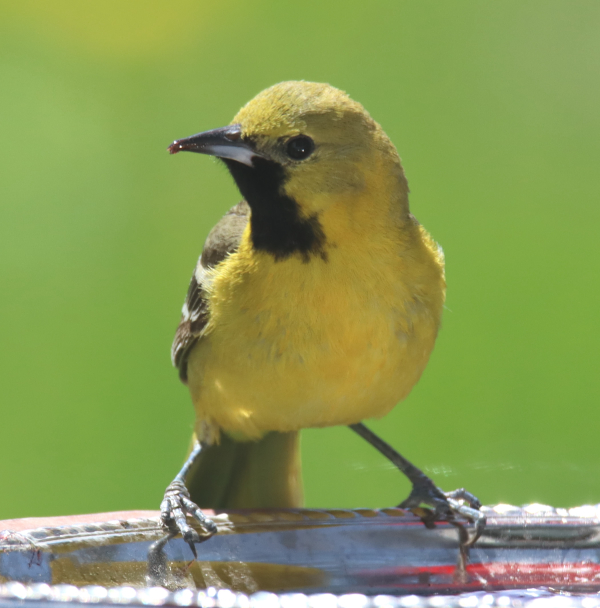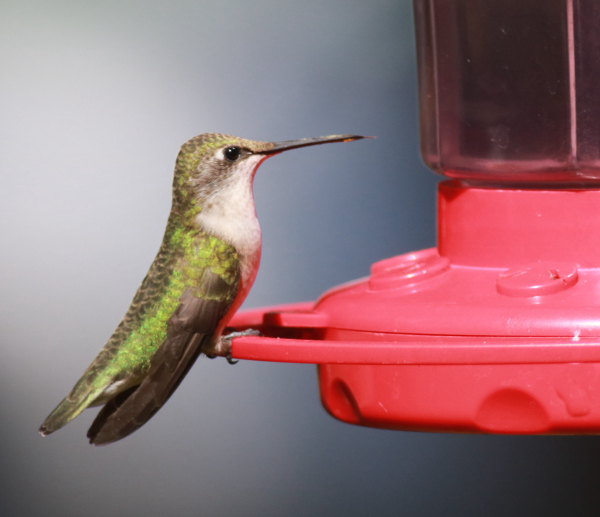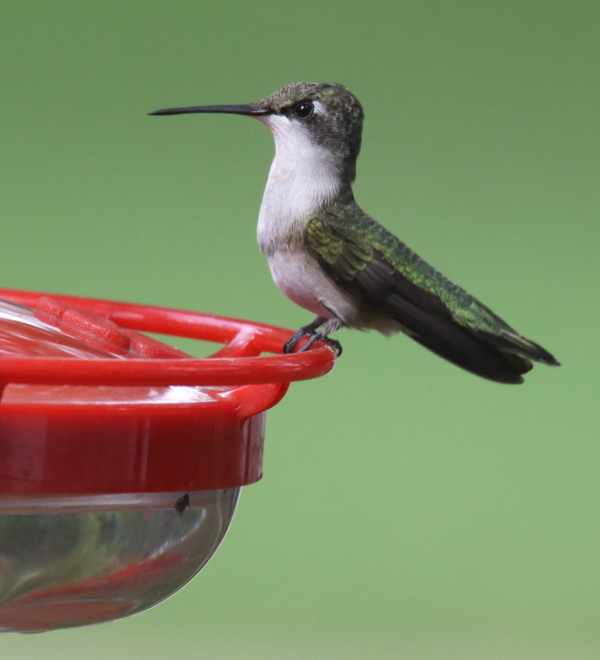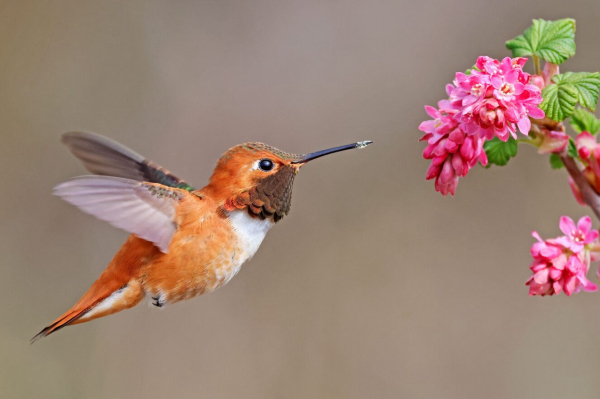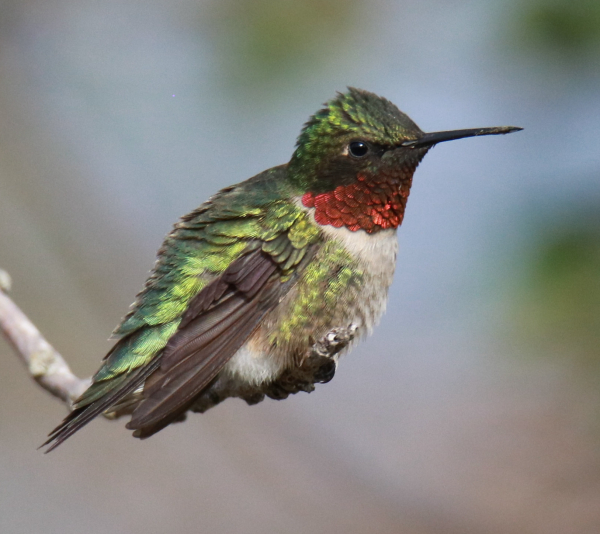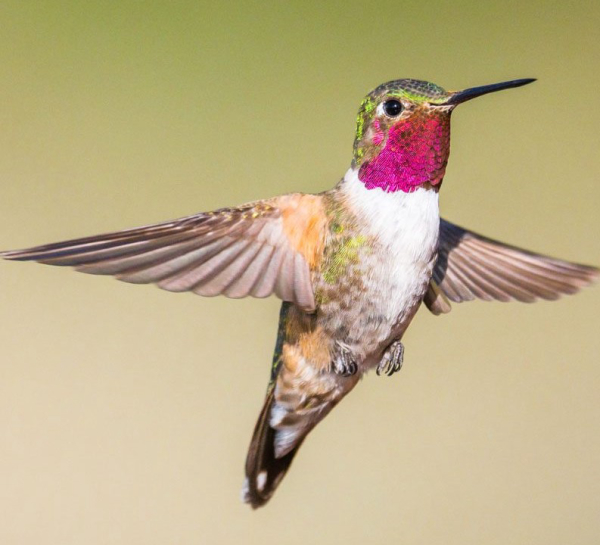Feeding a Variety of Migrant Resident Birds
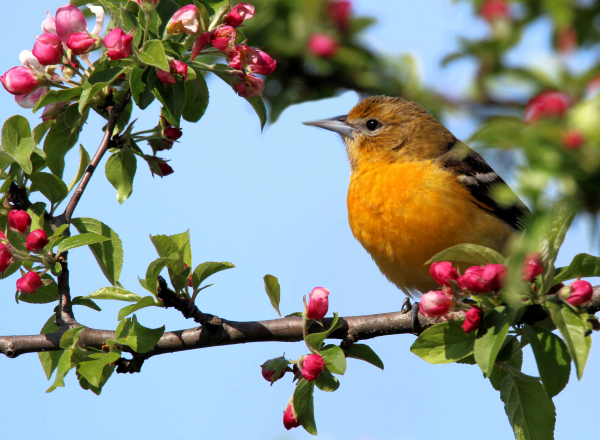
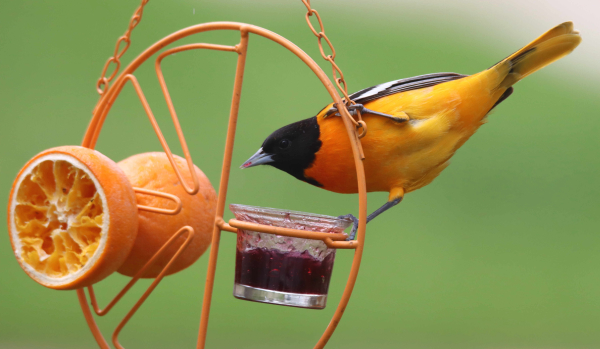
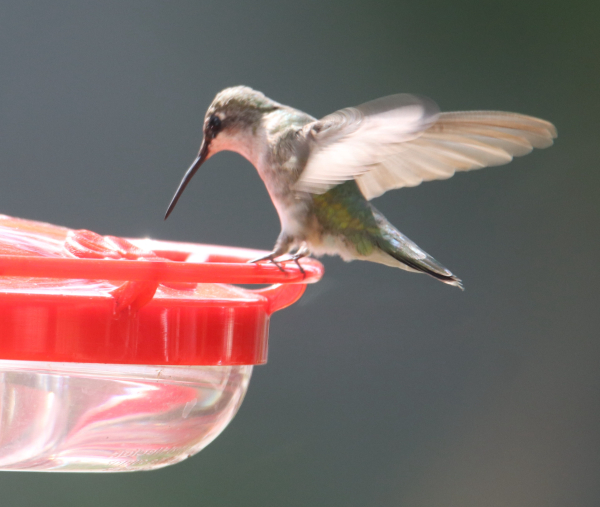
This is something of a last call to make your yard the most attractive little oasis for migrating songbirds. We all want attract the greatest variety of birds to our yards, and this is the best time of the year to attract new migrants as they arrive for a stopover or an extended period that may include nesting. The most important thing we can do is to provide a predictable source of favorite foods and fresh water on the edge of backyard habitat to benefit migrating birds. And you may be able to attract new birds to stop and stay a while – to nest in your yard or nearby.
Fresh Water – The most important element you can provide for birds is also the easiest and the least expensive. To attract and benefit the greatest variety of migrating and resident birds, simply provide fresh water. And if you add the sound of moving water via a dripper, sprayer, or mini-fountain, more birds are sure to find your watering and feeding station.
Add some Sugar-water too, in the form of nectar in your hummingbird feeder or feeders. Some orioles also like sugar-water, but provide it in an oriole nectar feeder (the feeding ports in hummingbird feeders are too small for orioles to access sugar-water nectar with their larger beaks.) Speaking of orioles, be sure to provide the ultimate oriole magnets: Grape jelly and sliced Orange halves.
This year, try doing a little testing with other Fruits too. For example, try a peeled banana or sliced grapes, any fruit you may have in your fridge. The fact that bananas and grapes are often provided at feeding stations from Costa Rica to Ecuador, where birds wintering in the tropics can be seen including some orioles, tanagers, and warblers; so it’s worth trying a few other fruits and testing the reaction when migrating songbirds arrive.
By providing these fruits, you will probably attract a secondary type of food – tiny bugs that birds will eat, birds including warblers, orioles, hummingbirds, and flycatchers. Even at our oriole feeder, we quickly noticed that when an oriole arrives, the first thing it does is check for a wayward ant, small beetle, or flying insect before it begins feeding on jelly or oranges.
Flowers – Another attraction for hummingbirds is to provide a selection of red tube-shaped flowers that will provide nectar and attract some of the tiny insects hummingbirds search for. Enjoy an occasional trip to a local nursery or garden shop to add a hanging pot filled with red tube-shaped flowers to your yard, or buy a tray of plants with red tubular flowers that you can transplant near your feeding station, or in pots that become mobile hummingbird magnets in your yard. Red trumpet flower vines a favorite of hummingbirds, along with red salvia, red bottle brush, red cardinal flowers, and whatever flowers you see hummingbirds attracted to in your area. Pick out plants that are already blooming and you should get immediate hummingbird visits.
Suet – Provide a suet option throughout the year, but switch to a no-melt suet blend during warm weather. No-melt suet is less messy and often provides more food value than traditional fat-based suet. We use no-melt suet year-round, and prefer to offer a hot chili no-melt suet blend, which is attractive to birds but the chili flavoring repels small mammals including squirrels.
Bark Butter – An especially versatile food choice is Bark Butter, a popular high-energy bird food available from Wild Birds Unlimited. Bark Butter is known to have attracted more than 150 species of birds, so see how many different kinds of birds you can attract! Bark Butter comes as a spreadable peanut butter-like paste, or as no-mess pellets that you can offer in a feeder – Bark Butter Bits; both are available in hot pepper forms to repel squirrels.
Seeds – When feeding birds became popular during the 20th Century, birders tended to stop feeding seeds after the winter season, but dedicated birders learned that some of the most rewarding times at your feeding station happen during spring migration and the summer nesting period. Therefore, to attract the greatest variety of birds, keep feeding seeds – sunflower seeds, nyjer thistle seeds, and peanuts too – the “winter seeds” your birds prefer. Seeds will keep goldfinches, cardinals, and other seed-eating birds coming to your feeding station, although most songbirds switch to feeding on small insects during the nesting season.
Now is the time of year to offer every food to see what works and what works best for your feeding station and the birds you attract. When combined with fresh water and the landscaping, flower garden, and backyard habitat you create, you will appreciate how rewarding it is to provide these important benefits to migrating and resident birds. Good luck and enjoy every day of spring birding!
Share your backyard birding experiences and photographs with The Birding Wire at editorstbw2@gmail.com

